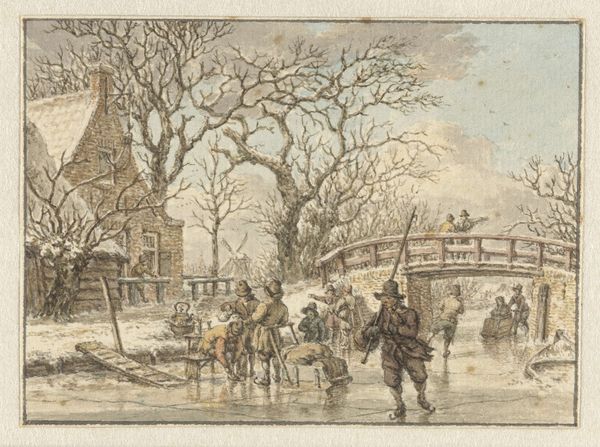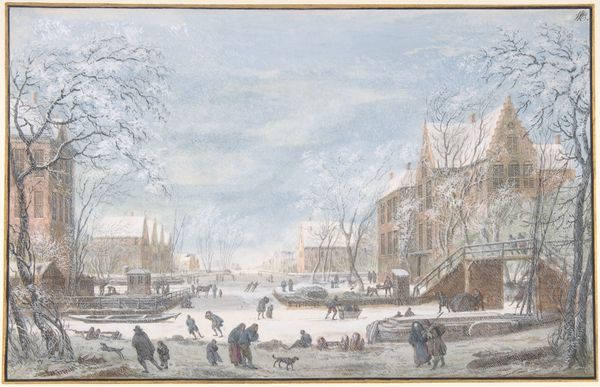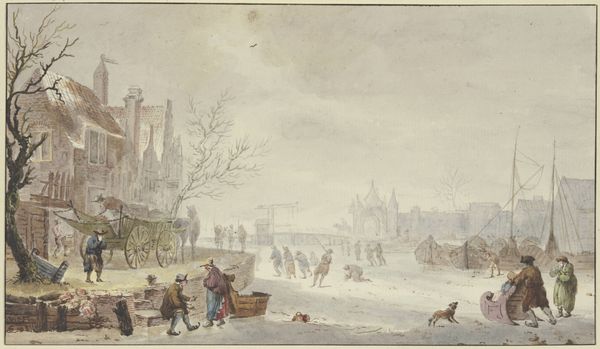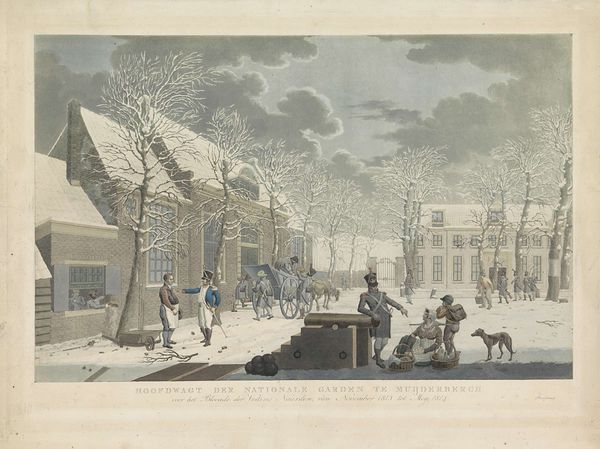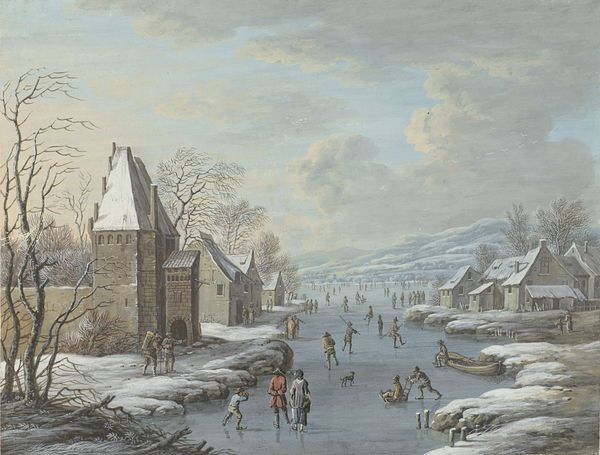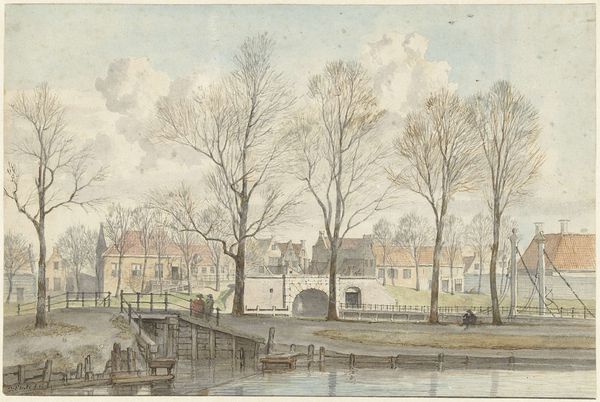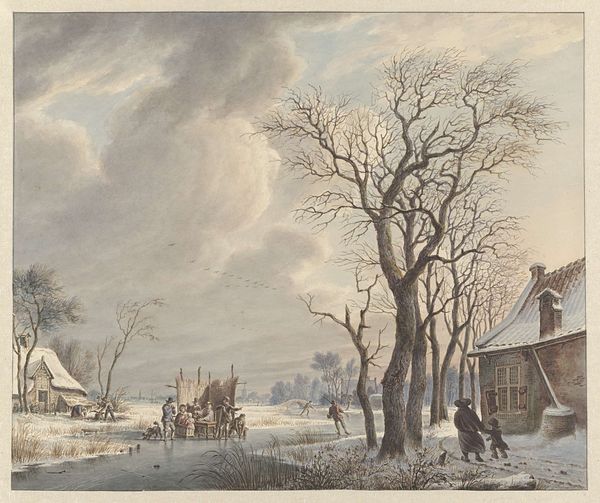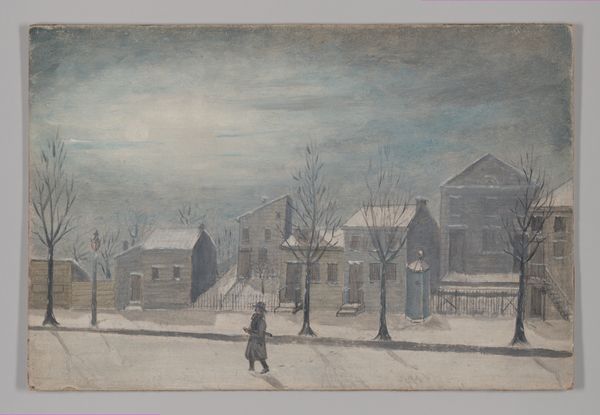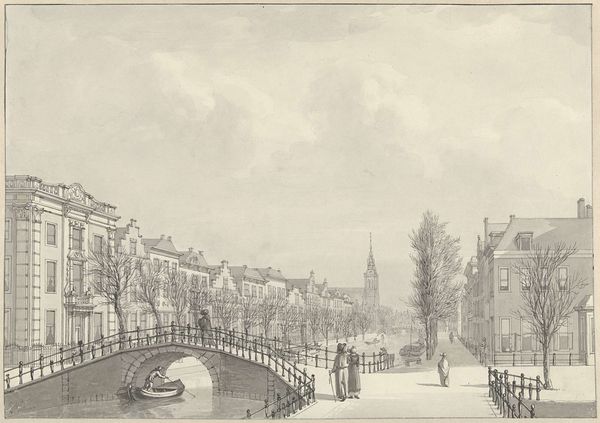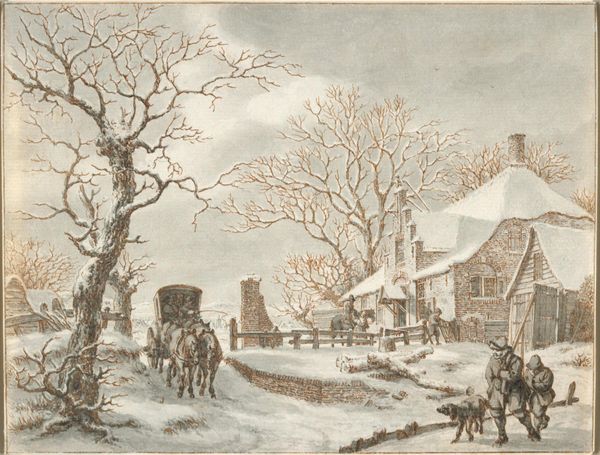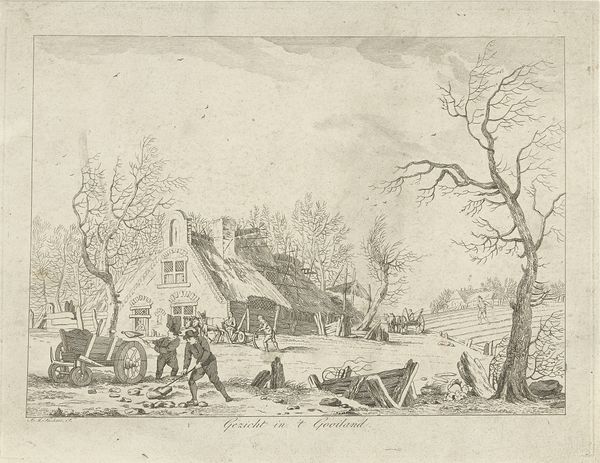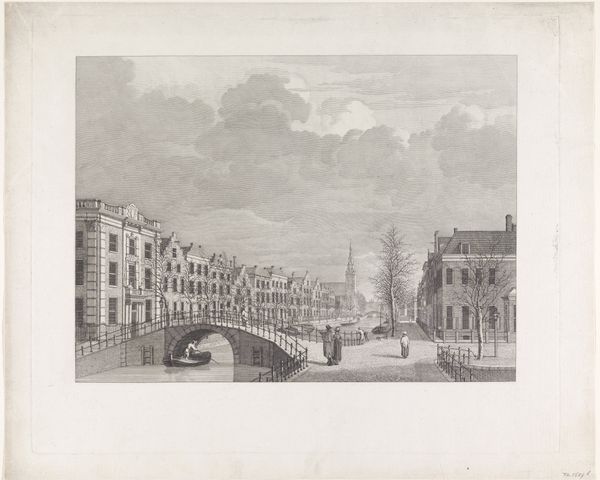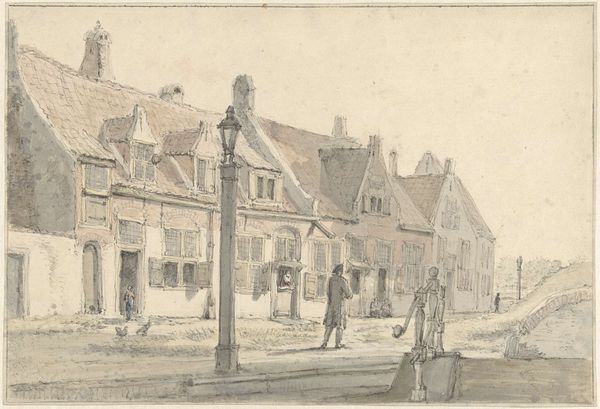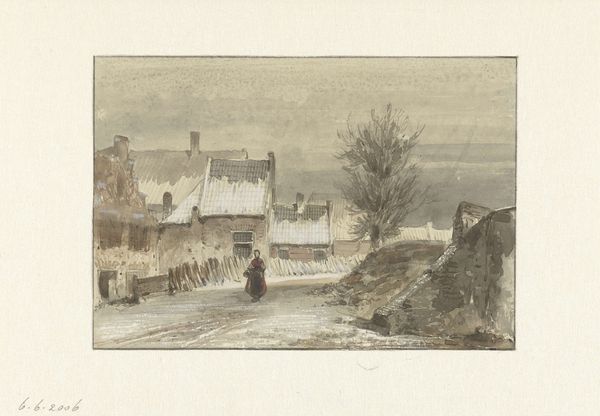
IJspret op de hoek van Spui en Nieuwezijds Voorburgwal 1773 - 1838
0:00
0:00
anthonievandenbos
Rijksmuseum
watercolor
#
landscape
#
watercolor
#
romanticism
#
19th century
#
cityscape
#
watercolour illustration
#
genre-painting
#
watercolor
Dimensions: height 363 mm, width 441 mm
Copyright: Rijks Museum: Open Domain
Curator: Let’s turn our attention to "IJspret op de hoek van Spui en Nieuwezijds Voorburgwal," attributed to Anthonie van den Bos, dating sometime between 1773 and 1838. Editor: It’s remarkably delicate for a winter scene. The washes of color give the buildings and frozen canal a sort of hazy glow. Is that watercolor? Curator: Indeed, watercolor on paper. Notice the muted palette, it’s quite characteristic of the romantic style but observe that it also depicts very pedestrian leisure activities. Editor: Right, it documents daily life. I'm drawn to the figure hauling a sled full of supplies; you see how much effort such a basic task must have demanded back then. Curator: Yes, the genre-painting theme lends insight into 19th-century Dutch life. The people skating, playing kolf—each element points to community, and perhaps, resistance to harsh weather. It presents winter as time marked by communal celebration and simple joy. Editor: Winter scenes always tell an interesting story about resourcefulness. And look how clearly you see the different qualities of labour portrayed: The hard work on the ground versus people at leisure. Was watercolor a commonly used medium for preparatory sketches or would van den Bos present these types of everyday themes as a final artwork? Curator: Excellent point. Watercolor enabled rapid and precise depiction of life—appealing when documenting rapidly changing atmospheres like an ice-covered canal in winter but it would certainly be a considered and finished artwork. We could interpret it now as holding both purposes you identify. Editor: And to what effect? Curator: Well, perhaps van den Bos' intent goes beyond simply recording life; He's capturing a feeling, perhaps one rooted in nostalgia or national pride by presenting accessible every-person images in detailed landscape painting traditions. Editor: Ultimately, this is about value being extracted at the surface of the site itself and then extracted once more by the artist using material to depict labour! Thanks to both, it has become enduring, for both. Curator: A perfect reminder to observe closely—to see past the picturesque into the very fabric of social and economic exchange.
Comments
No comments
Be the first to comment and join the conversation on the ultimate creative platform.
